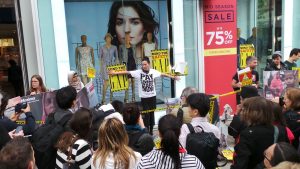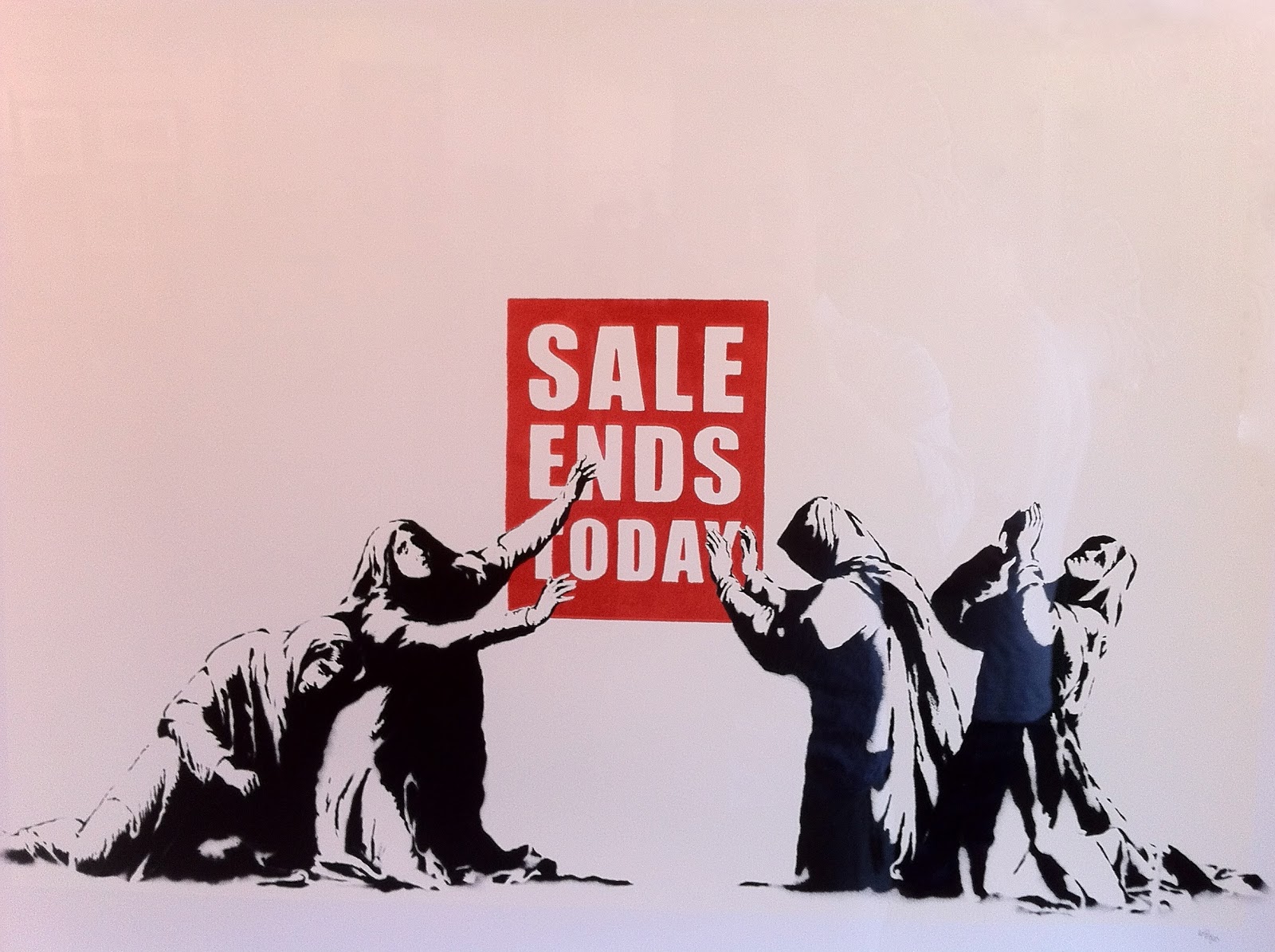The “glory” of fashion
Sometimes a big sign that says “SALE” in capital letters blinds us from thinking about what lies beneath the process of making and promoting clothes from big well-known companies that we wear every day.
Well planned marketing strategies
The clothing industry is one where everyone around the world participates every day- whether you wear clothes, buy them, work in a clothing store, a factory which produces them or even as a designer. It has been this way for many years but recently this production went from simply making and selling clothes for everyday wear to a dangerous and manipulating one. This is where the term of Fast Fashion comes along. Worldwide companies, that create inexpensive clothes modified from high end designers, have created an illusion for the average person to have a need to buy new clothes more often than needed.
Big brands went from introducing new clothing items every season to bringing new collections every two weeks. Their marketing campaigns trick us into thinking that we need to have those new clothes in order to fit into society. Commercials broadcast empowering, confident personalities with clothes from certain brands in order to paint the picture that with these clothes you could be the person from the advertisement. Through this, companies play with consumers’ emotions. Everyone is seeking happiness and, according to their model, you can achieve it by simply buying a new T-shirt.
The “affordable prices” that fast fashion endorses make regular consumers believe that they are able to buy more and even enjoy an elite status. But the truth is that it makes people spend excessively and the ones with all the profit are the owners of the companies.
All in order to make profit
The paradox of buying clothes in order to feel better, confident in existing society is that, in reality, the people who make these clothes are not happy at all. A large part of fast fashion clothing is made in low-income countries. A person might often see that majority of garments from brands like ZARA, H&M, Mango, Benetton state on the back of the item that they are made in countries like Bangladesh, Vietnam, India. Why do well-known clothing companies produce clothes in countries in which their market is a lot smaller compared to USA or Europe? Wouldn’t it be easier to make them in places where these clothes are actually sold?
Well, the answer to that is simple. For them it is cheaper to outsource production to other countries around the world instead of producing them in the country they are sold. Since low-income countries have low minimum wages, there are unclear collective, labour, child, maternity rights. This serves as an ideal environment for garment production in the textile industry.
Modern slavery
 In Bangladesh, eighty percent of clothing factory workers are young women who get paid from 20 to 50 cents per hour. Not only that, some employees get yelled at, or if they are complaining, even beaten. Let’s not forget to mention that employees work in bad condition buildings which often have poor ventilation systems that cause people to inhale chemicals and work in excessive heat. They breathe serious toxins which are used in order to make or die a clothing item.
In Bangladesh, eighty percent of clothing factory workers are young women who get paid from 20 to 50 cents per hour. Not only that, some employees get yelled at, or if they are complaining, even beaten. Let’s not forget to mention that employees work in bad condition buildings which often have poor ventilation systems that cause people to inhale chemicals and work in excessive heat. They breathe serious toxins which are used in order to make or die a clothing item.
In addition to already working minimum 10 hours per day, high temperatures make workers more tired and weak. In Cambodia – a country which massively produces garments for fast fashion companies – there are no temperature limits settled that factories have to follow. There have been many reports of people, mostly women, fainting. In this modern textile industry people are exploited as they are treated as slaves. A well known example of poor working conditions is when Rana Plaza, an eight-story commercial building contained clothing factories collapsed in 2013. This incident is considered to be one of the deadliest in the fashion industry. It took away 1134 lives and got approximately 2500 people injured. All of this happened because the building was in critical condition, but no one bothered to do anything about it. Survivors of this tragedy say that they had informed their supervisors about the cracks in the walls several times. In this case production seemed more important than human lives.
Whose fault is this?
Overall, the reality is that this is how fast fashion brands manage to supply new clothes fast and at an affordable price. A study done in 2014 shows that approximately from 60 to 75 million people work in the textile, clothing and footwear sector industry. It is safe to assume that this number is even bigger today. In order to gain the most profit with the lowest cost, companies do not invest into adequate working conditions. On one hand, it could be said that it is good that clothing factories give jobs and opportunities for people to earn money in low-income countries. However, the environment and the salary these workers are receiving is not acceptable. The only reason why governments are not stepping in is because companies relocate production sites to other countries if they make some drastic changes. However, society, by being ignorant and drawn into this circle of constantly buying new items contribute to the fast fashion industry. Even though being mass consumerism is an outcome of well planned marketing campaigns, a person ultimately still has a choice on how he wants to spend his money. The question, then, arises whether we should we blame companies, the government or each one of us.
Let’s try to fix this mess!
As this topic is slowly becoming a discussable issue, new movements, NGOs and private companies are eager to improve the whole clothing industry. Livia Firth is a founder of EcoAge– a consultancy firm that advises clothing brands how to run their businesses in a sustainable way. She is an activist herself who criticizes fast fashion industry as she hopes for justice. In her speeches she blames fast fashion companies stating that if there was no fast fashion, humanity would not have to face environmental issues and people who work in this industry would not be treated as slaves but with the same respect as everyone else. As companies are operating in a capitalist system, their main goal is to make profit and to be compatible among others and they reach their goal through cheap labor.
With people like Livia Firth and NGOs who openly speak about problems arising from extreme consumer capitalism, there is hope that radical consumerism and exploitation of people could be stopped.
by Eligija Ruksyte
Photo Credits
Banksy black friday, John Jones (CC BY-ND 2.0)
L, ZARA (CC BY-NC-ND 2.0)
Trades Union Congress, Rana Plaza disaster anniversary action on Oxford Street (CC BY-NC-ND 2.0)
2013-07-09 05.26.46, NYU Stern BHR (CC BY-NC 2.0)








